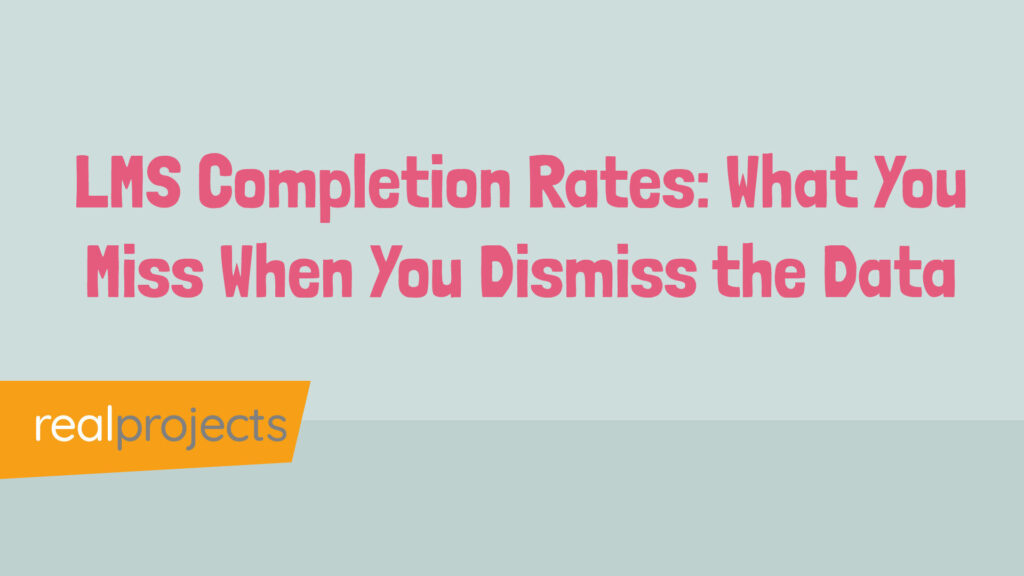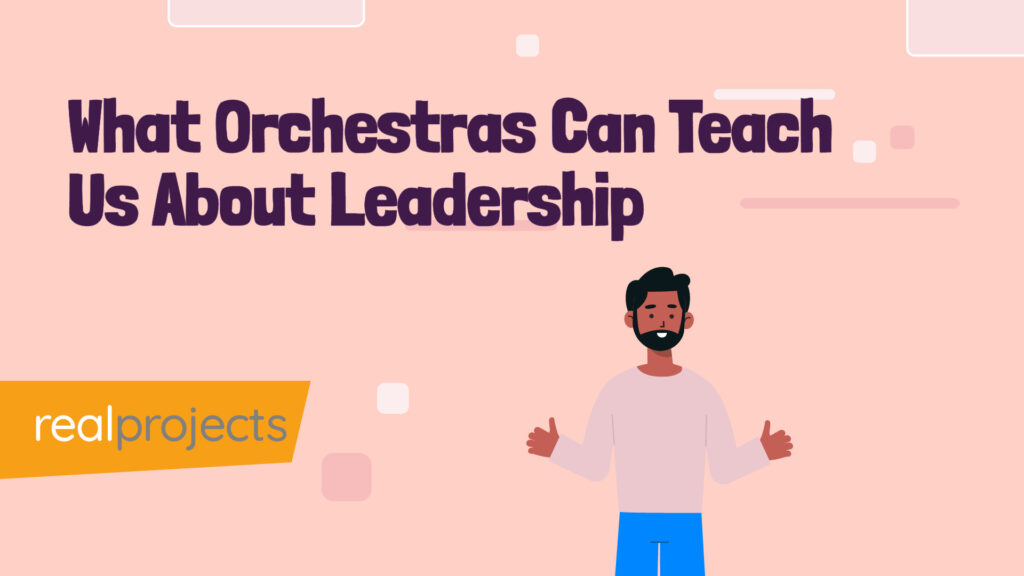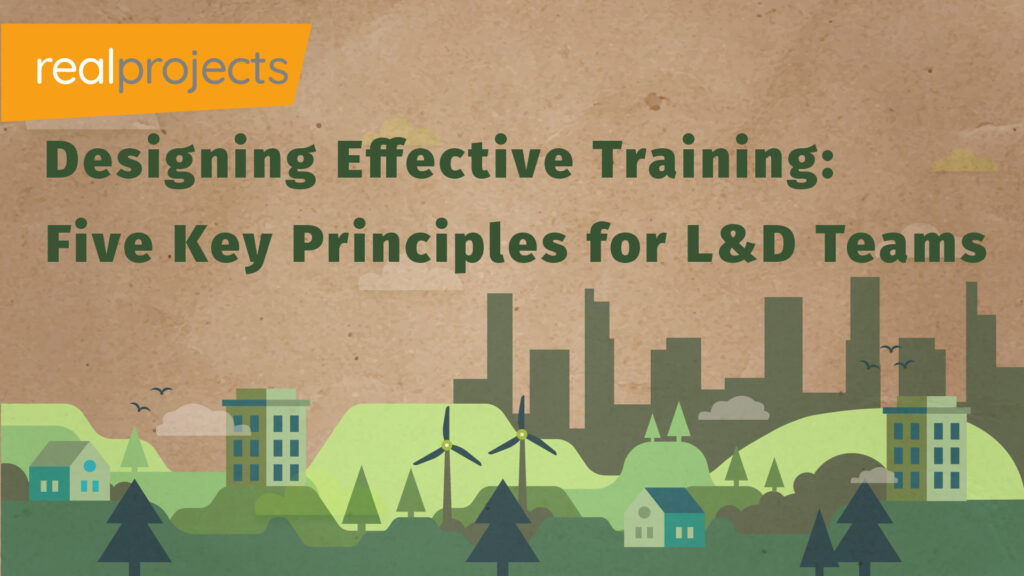Ever seen a post blaming the LMS/LXP or the content library for low completion rates? It usually ends with a line about how people Netflix style interfaces and how completion rates are useless.
They’ll be a follow up post about data, not using the data, vanity metrics. But these are easy headline grabbing posts. If you want to get L&D ROI you need to make data-driven decisions as part of your strategy.
At first glance, it sounds like a content problem. But it’s rarely about content alone or LMS adaption.
Some Quick Data Points
- The global LMS market is projected to reach $28.1 billion by the end of 2025, growing at a CAGR of 19.2% (Samelane).
- There are approximately 73.8 million LMS users globally (LinkedIn Pulse).
- Only 22.9% of organisations feel their LMS solves the right problems (Growth Engineering).
- Just 15% of employees worldwide feel motivated at work, and in the UK, that figure drops to 8% (TeamStage).
- 59% of employees received no formal training in 2023, with many relying on self-directed learning (Mentimeter).
- Employees tend to prefer informal learning, on-the-job, peer learning, and digital self-paced tools , over structured training (Bridge).
- YouTube doesn’t win on content quality. It wins because it offers more variety, tone, and freedom from surveillance (Samelane LMS Report).
The Problem Isn’t Content. It’s Design.
People still want to learn. They just don’t want to be watched doing it.
I’ve worked with lots and people and spoken to them at conferences and exhibitions, “My team doesn’t work nine to five. They work when it fits around their lives.” That flexibility shapes how people engage with learning. They pick things up when they need it, on phones, in between jobs. Learning happens in moments now, not hours.
You might be doing something in the garage, need a fix and get on YouTube. It might be on the train and need to know how to spell a word, understand a concept. You’ll get on the phone.
So when someone jumps to YouTube at 9 p.m. to search how to write a better email, it’s not because they think your LMS content is bad. It’s because it’s easier. It’s quicker. And crucially, no one’s watching them do it.
Because that same person might not want their manager knowing they needed help with something ‘basic.’ They don’t want that flagged in a dashboard. They don’t want an automated nudge or follow-up chat. They just want to quietly get better at something.
People want to train. They want to learn. It might be a course, it might be just something that they are picking up casually. Too often I’ll read a post on LinkedIn that’s an assume that people at work don’t want to use content provided at work. Really? Are you sure? Where is the basis for this?
The basis for this is often that everyone is still working 9-5 and that no-one wants to pick up content out of work or at home. People will access content, but its often how and why its been tracked. Have you even doing a sport qualification or learnt a new language? You might need to create a username, password and access a new portal.
You’ll do this. Why? Because you are accessing content that delivered value,
If people are not accessing content, that’s not a failure of content. That’s a failure of design. And a misunderstanding of motivation.
Scott Hewitt: People want basic skills content. It doesn’t matter what level they’re are working at. But do we make it easy enough to find? Or are we assuming they’re uninterested just because we’re tracking the wrong metrics?
Why Learners Choose YouTube Over the LMS/LXP
If I need to refresh a skill, like a spreadsheet formula or punctuation rule, I don’t log into a system. I pick up my phone, open YouTube, and scan ten versions of the same video until I find one that lands.
It’s fast. It’s indexed. It gives me options.
YouTube doesn’t win because it’s got better content. It wins because it’s got more content. Different styles. Different tones. And it leaves you alone while you learn.
Scott Hewitt: There’s this idea that people don’t browse LMS content like they browse Netflix. But is it really about the platform, or about how we’ve structured the experience?
Format Isn’t the Issue. Access Is.
There’s no single piece of content that works for everyone. What you might not like might be exactly what someone else needs. That’s true for music, for learning, for anything. So when we dismiss certain formats, “No one wants cartoony videos” or “Scripted office dramas don’t work”, we’re just projecting personal taste as universal truth.
LMS/LXP adoption isn’t about format. It’s about access, tone, context, and trust.
LMS/LXP Success Depends on Context
There’s no silver bullet in L&D. No single platform, format, or library is going to fix everything. And there’s no single reason why something fails.
Scott Hewitt: Often in this sector, it’s easy to blame one specific thing. One year it’s the LMS. The next year it’s content. But how often do we step away from the noise and look at how some organisations are making these tools work exceptionally well?
Some LMS implementations work brilliantly. Some don’t. Just like some face-to-face training lands and some flops. It’s not about the tool. It’s about how you use it. It’s about understanding your audience and removing the friction.
Scott Hewitt: An LMS is a major IT project. When it doesn’t go well, do we ever pause to ask whether it was planned and implemented like one? With clear specs, stakeholder buy-in, and a scope that stayed intact?
LMS/LXP success is not about the tool alone. It’s about how people are supported, what they’re offered, and how they find it.
So no, content isn’t the problem. The problem is pretending there’s only one way to learn. And missing the quiet, personal reasons people choose one tool over another.
When we design learning like that matters, we don’t need to force engagement. We just need to make space for it.
Scott Hewitt: If you really want to take a lesson from Netflix or YouTube, ask yourself, do we make it fast and flexible to find something that fits? Or are we just focused on what we think people want, not what they’re really searching for?
LMS/LXP Q&A: Quick Answers for L&D Teams
Q: What’s the difference between LMS and LXP?
A: An LMS is built for structured training. It helps deliver courses, assign learning, and track completion. An LXP does all that, but also focuses on helping people discover content, follow interests, and learn in their own way.
Q: What does LXP stand for?
A: LXP stands for Learning Experience Platform. It’s a tool that gives people more choice in how they learn, often using recommendations, search, and social features to surface relevant content.
Q: Can LXP replace LMS?
A: Not always. An LXP works well for self-directed learning, but most organisations still need an LMS for things like compliance and mandatory training. Some tools offer both in one system.
Q: What is an example of an LXP?
A: Examples of LXPs include Degreed, EdCast, and HowNow. They help people explore and learn at their own pace, with tools for recommendations, tracking, and personalised content discovery.



